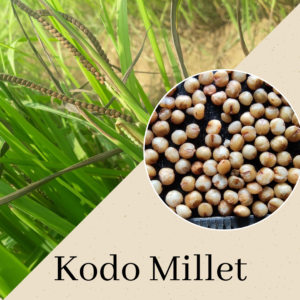Table of Contents
Millet is a generic term used for small-sized grains. Millets belong to the family, Graminae. Millets are a group of cereal food grain crops that are adapted to cultivation over a range of tropical and subtropical climates. These crops can be grown with lesser inputs as compared to rice and wheat.
They are climate-resilient, hardy, and dryland crops. Nowadays it is termed as Nutri-Cereals. They are rich in nutrients and offer health benefits as they help us in the management of disorders like diabetes, obesity, etc. They are also a good fooder for the animals and birds too enjoy millet. They are rich in micronutrients, particularly minerals and B vitamins, and also a good source of carbohydrates and phytochemicals with nutraceutical properties.
Let us see what are the types of millets grown in India and in abroad.
Types of Millets:
Millets are generally categorized into Major and Minor. Pearl Millet and Sorghum comes under major millet. Finger Millet, Kodo Millet, Foxtail Millet, Proso Millet, Little Millet, Barnyard Millet, and Browntop Millet. India and India is the largest producer of millets in the world. Teff and Fonio millets are grown in Africa.
Sorghum:
It is also known as Jowar. It is the world’s fifth major cereal food grain in terms of area and production after paddy, wheat, maize, and Barley. In India, it is mostly grown for food and animal fodder. It is extensively grown in north-western, western, and Central India. Maharashtra and Karnataka are the largest producers of Sorghum. Certain varieties are used for producing ethanol. In the coming days, it will address fuel deficiency as it has the capacity to produce biodiesel.

Pearl Millet:
It is also known as Bajra in India. The largest producer are Rajasthan, Maharashtra, Gujarat, Uttar Pradesh and Hariyana. It has the capacity to produce a grain yield of 4-5 tonns per hectare.

Foxtail Millet:
It is also known as Italian Millet. It is generally grown in semi-arid regions. Due to its short growing season it requires low water. It matures in 65-70 days.

Finger Millet:
It is commonly known as Ragi. Due to its nutritional benefit and easy to process it is mostly consumed in rural areas. It can be grown in wide range of temperature and soil. It has the highest productivity among the millets in India. Ragi have a excellent malting properties and is widely used for baby foods.

Proso Millet:
It is also known as common or broom corn millet. It is a short season crop cultivated in drier regions of Asia, Africa, Europe, Australia and North America. It is a quick growing crop with less water requirement.

Barnyard Millet:
It is cultivated on marginal lands where rice and other crops generally fails. It requires three to four months for maturity. In India, it is grown in the hilly areas of Uttarkhand and some parts of Andhra Pradesh.

Little Millet:
It is known as Kutki in Hindi and Suan in Odia. In India it is mostly grown in the eastern ghats by the tribals. It looks similar to Proso Millet. It can be differentiated by hairy portion in the stem. It has the capacity to withstand both drought and water logging.

Kodo Millet:
It is native to the tropical and sub-tropical regions of South America and domesticated in India about 3000 years ago. It is mostly grown in Chattisgarh on poorest of soils. It takes about 2 to 4 months for maturation.

Browntop Millet:
It is mostly grown in Karnataka and Andhra Pradesh of India. It can grow even in less fertile soil. It matures in 60-80 days.

Types of Millets Grown in India:
For more Videos on Millets : TCR Connecting Agriculture
Fonio:
It is cultivated in West Africa to some extent. White Fonio is called as ‘Acha’ or Hungary Rice. The crop is very robust and can resist drought and heavy rains. It matures in 70-150 days.

Teff:
It can be grown in wide range of climatic conditions. It is mostly grown in Ethoiopia and Eriteria. It bears a very small grains. It can withstand waterlogged and drought conditions.



5 thoughts on “Miracle Millets – Introduction and 11 types of Millets”